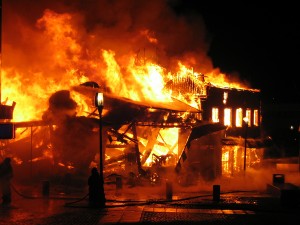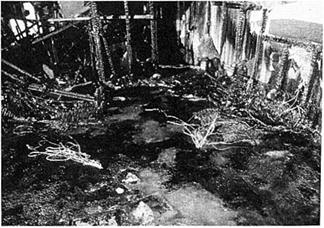Fire Investigation
Fire investigation is a forensic discipline that requires attention to detail and a systematic approach to make a scientifically sound determination of the cause, origin, and behavior of a blaze. We provide our clients a professional analysis based on years of experience in investigation and examination of fire scenes.

Components of Fire Investigation
- Burn pattern analysis
- Depth of Char measurement
- Calcination measurement
- Heat and Flame Vector Analysis
- Computer modeling
- Diagram analysis
- Witness Interviewing
- Preservation of evidence
Services
- Investigation of origin and cause of fire
- Expert Witness testimony
- Arson Defense
- Addressing “Negative Corpus” determination
- Critical Review & Analysis of investigation methodology of previously conducted investigation
- Analyzing Compliance with accepted professional standards for fire investigations
- Daubert analysis for expert witness challenge
Terrell Nadeau – Over 40 years in fire investigation Full CV and Download
- State of Michigan Certified Fire Inspector, highest rank Inspector IV
- Member of National Association of Fire Investigators
- Member of National Fire Protection Association (NFPA)
- Certified Fire Inspector (CFI-I and CFI-II)
- NFPA 1033 Qualified
Direction of Fire Travel and Fire Pattern Examples and Explanation
The lines of demarcation between the damaged and undamaged area of irregular patterns range from sharp edges to smooth gradations, depending on the properties of the material and the intensity of heat exposure. Denser materials like oak flooring will generally show sharper lines of demarcation than polymer (e.g. nylon) carpet. The absence of a carpet pad often leads to sharper lines.Irregular patterns are common in situations of post flashover conditions, long extinguishing times, or building collapse. These patterns may result from the effects of hot gases, flaming and smoldering debris, melted plastics, or ignitable liquids.The presence of ignitable liquids is suspected, supporting evidence in the form of a laboratory analysis should be sought. It should be noted that many plastic materials release hydrocarbon fumes when they pyrolyze or burn. These fumes may have an odor similar to that of petroleum products and can be detected by combustible gas indicators when no ignitable liquid accelerant has been used.A ” positive” reading should prompt further investigation and the collection of samples for more detailed chemical analyses. It should be noted that pyrolysis products, including hydrocarbons, can be detected in laboratory analysis of fire debris in the absence of the use of accelerants.It can be helpful for the laboratory, when analyzing carpet debris, to burn a portion of the comparison sample and run a gas chromatographic-mass spectrometric analysis on both samples. By comparing the results of the burned and unburned caparison samples with those from the fire debris sample, it may be possible to determine whether or not hydrocarbon residues in the debris sample were products of pyrolysis or residue of an accelerant. In any situation where the presence of ignitable liquids is suggested, the effects of flashover, airflow, hot gases, melted plastic, and building collapse should be considered.

When overall fire damage is limited and small or isolated irregular patterns are found, further exanimation should be conducted for supporting evidence of ignitable liquids. Examples – FIGURE 1 (left) and FIGURE 2 (bottom left).Even in these cases, radiant heating may cause the production of patterns on some surfaces that can be misinterpreted as liquid burn patterns. Example – FIGURE 3 (below right).


Pooled ignitable liquids that soak into flooring or floor covering material as well as melted plastic can produce irregular patterns. These patterns can also be produced by localized heating or fallen fire debris. Examples FIGURE 4 (below left) and FIGURE 5 (below right).


The term pour patterns implies that a liquid has been poured or otherwise distributed, and therefor, is demonstrative of an intentional act. Because fire patterns resulting from burning ignitable liquids are not visually unique, the use of the term pour patterns and reference to the nature of the pattern should be avoided. Examples FIGURE 6 (Left) and FIGURE 7 (below)


Liquids Versus Melted Solids.
Many plastic materials will burn. Thermoplastics react to heating by first liquefying, and then, when they burn as liquids, they produce irregularly shaped or circular patterns. When found in unexpected places, such patterns can be erroneously identified as ignitable liquid patterns and associated with an incendiary fire cause. The investigator should be careful to identify properly the fuel sources for any irregularly shaped or circular patterns.Terrell Nadeau – Over 40 years in fire investigation Full CV and Download
- State of Michigan Certified Fire Inspector, highest rank Inspector IV
- Member of National Association of Fire Investigators
- Member of National Fire Protection Association (NFPA)
- Certified Fire Inspector (CFI-I and CFI-II)
- NFPA 1033 Qualified
